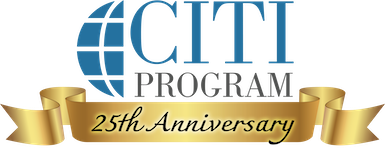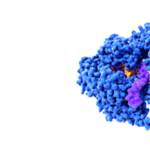Season 3 – Episode 10 – Ethics, Innovation, and the Future of Animal Research
In this episode, we discuss the practical applications of Replacement, Reduction, and Refinement, emerging animal model alternatives, and how federal initiatives are shaping the future of science.
Podcast Chapters
Click to expand/collapse
To easily navigate through our podcast, simply click on the ☰ icon on the player. This will take you straight to the chapter timestamps, allowing you to jump to specific segments and enjoy the parts you’re most interested in.
- Promise and Limitations of New Approach Methods (00:00:01) Dr. LaFollette discusses the potential and current limitations of new approach methods (NAMs) in research.
- Introduction and Overview (00:00:27) Host Alexa McClellan introduces the episode, guest, and main topics: the Three R’s and innovation in animal research.
- Dr. LaFollette’s Background (00:01:19) Dr. LaFollette shares her background in animal behavior, welfare, and her path to the Three R’s Collaborative.
- Mission of the Three R’s Collaborative (00:03:16) Explanation of the Three R’s Collaborative’s mission and its global reach in advancing ethical animal research.
- Three R’s Collaborative Initiatives (00:04:16) Overview of specific initiatives for refinement, reduction, and replacement in animal research.
- Balancing Ethics and Scientific Rigor (00:07:01) Discussion on how ethical considerations and scientific rigor are intertwined in animal research.
- Promise of New Approach Methods (00:08:59) Exploration of promising NAMs, including in vitro models and artificial intelligence applications.
- Limitations and Gaps in NAMs (00:11:17) Analysis of current limitations, validation challenges, and confidence gaps in adopting NAMs.
- Federal Initiatives and Priorities (00:15:00) Discussion of recent U.S. federal announcements and what they signal about priorities in animal research.
- Impact of Federal Funding on NAM Adoption (00:17:46) How increased federal funding and attention may accelerate the adoption of new approach methods.
- Collaboration Across Sectors (00:19:02) Opportunities and challenges for collaboration between government, academia, and industry to advance the Three R’s.
- On Campus Promo (00:21:45) Host Ed Butch recommends his podcast On Campus.
- Reduction and Refinement in Practice (00:22:10) Practical examples and strategies for implementing reduction and refinement in laboratory animal research.
- Advice for Early Career Scientists (00:26:55) Guidance for integrating the Three R’s into research programs, including training and community involvement.
- Closing Remarks and Resources (00:29:17) Final thanks, summary, and information about further resources and courses for listeners.
Episode Transcript
Click to expand/collapse
Megan LaFollette: There’s a lot of promise, I think there’s a lot of potential for NAMs being able to really give us a lot more data, extend the scientific knowledge, but we’re still a ways away from really being confident and having them validated and replicable among different laboratories.
Alexa McClellan: Welcome to On Research, the podcast where we explore the ideas and innovations shaping the future of science. I’m your host, Alexa McClellan, and today we’re diving into a vital topic at the intersection of ethics and innovation in research. Our guest is Dr. Megan LaFollette, Executive Director of the 3Rs Collaborative. Megan and her team are dedicated to advancing the principles of replacement reduction and refinement, the 3Rs, in animal research. We’ll discuss how the 3Rs are applied in practice, the promise and limitations of new approach methods, and what recent US federal initiatives like the NIH’s New Organoid Development Center mean for the future of research.
All right. Well, Megan, it’s so nice to meet you. Thank you so much for coming and talking with us today.
Megan LaFollette: Definitely. Good to meet you too.
Alexa McClellan: So to get started, I was hoping that you could share your background and talk about what drew you to the 3Rs Collaborative.
Megan LaFollette: Definitely. So, I’ve always been a big animal lover since I was very young. Always really interested in animal behavior, as well as human behavior, and what we do as people can really change the lives of the animals we interact with for either better or worse. So, went through a career path, thought about being a vet, thought about being a teacher. Ended up getting a Master’s and PhD in animal Behavior and Welfare from Purdue University, where I actually specialized on laboratory animal welfare. And even more specifically, there was a component on human behavior change for animal welfare. So understanding why really people do or do not do welfare enhancing strategies, and how do we help them influence them more.
And it’s been really awesome. What really drew me originally to the collaborative was ability to use that innate interest and expertise that I had, but on a much broader scale. Not just at one institution, not just refinement, but all 3Rs. So yeah, the 3Rs Collaborative was really a perfect fit for me. I was also really interested and had a lot of training in science communication. And although I did some primary research with animals, I didn’t necessarily love the either fighting for grants, or just the high pressure of actually running an animal experiment. So, I love the idea of being in that world and helping, but not necessarily doing all of that stuff myself, and getting to make an impact in a different way.
Alexa McClellan: Yeah, for sure. So for those of our listeners who don’t know, can you speak a little bit about what the 3Rs Collaborative is and what its mission is?
Megan LaFollette: Yes. So, the 3Rs Collaborative is a non-profit based in the United States whose mission is to advance better science for both people and animals. We really believe that good science, good animal welfare, good human welfare is entirely intertwined, and that the 3Rs of animal research, which is refinement, reduction, replacement, can be a tool, a guiding force, kind of a framework that can help us achieve our mission. And I will say, although we are based in the United States, we certainly have a global reach. We’ve got a lot of partners, especially in Europe, as well as some in Canada., A few in Asia, a few in Australia. It’s definitely a global research world out there. But yeah, we do a lot of work focused on facilitating the 3Rs, and getting more people to use them in their everyday research lives.
Alexa McClellan: That’s great. What sort of initiatives do you do?
Megan LaFollette: Yeah. So, we really try to span and balance between refinement, reduction, and replacement. So refinement, these are initiatives that work to improve the lives of research animals that are currently being used. Right now, we have created a bunch of resource pages that are on different species that anybody can access that’s free and high level, so that’s a basic resource we provide. We also have an initiative focused on refined mouse handling, so picking mice up with tunnels, cup tans, huts, et cetera, instated by the tail. We have a non-human primate behavioral management initiative focused on refinement. Those are our more pure refinement initiatives.
For reduction, this is about ensuring that, when we conduct an animal experiment, we’re using as few animals as possible while still having high quality research that’s actually getting the answers we want. So this is reproducibility, rigor, et cetera. Our main initiative focused on this is called Translational Digital Biomarkers, and it’s these 24/7 home cage monitoring technologies where we can collect this data automatically. It’s both refinement and reduction. It helps the animals, they’re not being handled as invasively, it gets us really good data, lots of data. It’s really, really awesome and really impactful.
And then for pure replacement, we have, well, and again, it spans. We have our artificial intelligence initiative for preclinical safety and risk assessment, as well as our microphysiological systems initiative, this is in vitro methods, as well as our environmental health monitoring initiative, which is about replacing soil bedding sentinels with PCR testing technologies.
And then on top of all of that, we have a few initiatives that are really comprehensive that span all 3Rs, and that’s the development of both materials and resources to help people that work in the facility. So culture of care, compassion, fatigue, resiliency, because if people who work with these animals are burnt out, if they’re exhausted, we can’t really expect them to be going, to thinking of new things, to changing. Change is really hard and you need some bandwidth for that. So, one is focused on that. And then the final one is the creation of our 3R certificate course, which we partnered with CITI Program to actually launch earlier this year.
Alexa McClellan: That’s fantastic. There’s a lot of good stuff there. One of the things that you talked about briefly was about striking that balance between ethical considerations and maintaining scientific rigor. Can you speak a bit more about that and how researchers can find that balance?
Megan LaFollette: Yeah, absolutely. So for me, I don’t even necessarily consider it a balancing act per se. I see it as super intertwined, that when you do things that refine, reduce, replace animal use, you are almost inherently increasing scientific rigor, because the majority or a lot of research, especially in the biomedical field that we’re doing, is in hopes that it’s going to translate to human patients. So the more that we can mimic treating our animals like a human patient where we’re giving them a bit more control, giving them better choice, making sure they’re having the best lives possible, that’s going to be more similar to a human population. And you’re probably going to get more applicable results, more translatable results, often less variable results, which promote scientific rigor.
And same thing, reduction is all about scientific rigor. It is really, some people try to oversimplify it to, “Oh, it’s just few as animals as possible,” and that’s really not what it is. It’s few animals, but with high quality scientific rigor, because if you’re doing an experiment and it’s not really valid, it’s not reproducible, it’s not really reduction.
And then finally, replacement. Also super intertwined. This is a lot of times we’re using human data earlier in the scientific research pipeline, so it’s very highly scientific rigorous. We’re figuring out lots of things before we may move into an animal model, or sometimes maybe we don’t have to for certain applications. And so really it’s totally intertwined and very complementary.
Alexa McClellan: Yeah, that makes sense. Thinking about the replacement aspect of the 3Rs, right now there’s a lot of buzz about new approach methods, which are being really promoted as the future. And I’m curious if you can speak a bit about what’s showing the most promise right now in that field.
Megan LaFollette: Yeah, definitely. There’s so much about these NAMs, which sometimes I joke is never-ending acronym madness, because sometimes it’s new approach methods, sometimes it’s novel alternative methods, sometimes it’s not animal model. There’s a million different ways you can define this acronym. And sometimes people just don’t, which is fine. It’s broad. A lot of people do typically mean more replacement type technologies, but it really can run the gamut. I would definitely say some of the complex in vitro models, micro physiological systems, those are showing a lot of promise. We’ve got a lot of technology where we can take human cells, grow them into organs. We have multiple cell types, they’re very similar to a human organ, and we’re getting that data earlier in the process, looking sometimes both at efficacy, sometimes at safety. They’re definitely really promising. There still needs to be work done, but they’re really exciting and can get lots of good data.
And then I’d say definitely artificial intelligence. I’m sure everybody listening today is hearing more about artificial intelligence. I’m sure more and more of us are using it in our everyday lives, and beyond just the basic time savings that it can give us on very basic research tasks. There’s also some really exciting applications for using it to predict the effects of a new chemical, or drug, or therapeutic on humans to predict how an animal study is going to go before you run it, to have virtual control groups. So a lot of times it’s like we need a control group, to have proper experimental design. But we already kind of know what’s going to happen in those control groups, because we’ve been running these safety studies for so long. So, can we have been virtually instead still use AI to have some variability, put some information in there. So I’d say those are definitely some that have a lot of promise.
Alexa McClellan: Yeah. So, although new approach methods might be very promising, I did hear a little but, in what you just said. And I’m curious if you can talk about what some of those limitations or gaps are that need to be addressed before NAMs can have widespread adoption.
Megan LaFollette: Yeah. I’d say, overarchingly, the biggest limitation or gap, which is a little bit high level, is just the general scientific community’s confidence in these methods. And this is this overarching thing of, as a community, our regulators are pharmaceutical companies, biotech companies, scientists generally. Not everybody is really confident of these technologies to do quite everything that they say they can do. Or to do everything. Especially, there’s definitely confidence that these models can do everything that say an animal model can do. They’re still relatively new in terms of technologies. Artificial intelligence especially is very new. Sometimes it’s considered a black box. If we don’t understand how the technology works, we can’t necessarily know its limitations.
And ultimately, the whole point of lot of biomedical research is either ensuring human animal environmental safety, and we want to make sure that we’re doing that responsibly, and we know the limitations, some of them, of the models we have, we know what to expect. We have some degree of confidence in them. And so trying to get that confidence in these new models is a big limitation, because just because something worked in one lab for one person who’s really good at pipetting, is it going to lurk in a different lab? And then also, if they’re based on human cells, how many donors do you have in that model? Is it going to be representative of the human population? Of course, there’s also, is the animal model really representative of the human population? So a lot of the concerns are not dissimilar, but it’s almost trusting the demon you know. We know the limitations, we have familiarity.
And then the one really big thing that I do think is going to take a while is, a whole animal is a whole animal. It has all of the organs. Even if it’s not acting exactly like a human, it’s still consuming a drug that’s going into the gut, that’s then being processed by the liver, by the kidneys. It’s being distributed. Again, it might not be exactly how the human body does, but it’s very complex. And there’s a lot that we do not know about how bodies work, mammals, humans, otherwise. And a lot of times, a lot of these in vitro methods are a single-organ type, and they might not even have all the cellular components of that organ type, let alone having them connected together.
And there’s ways to get around that. There’s modeling. That’s sometimes when you combine AI and these in vitro methods, there’s a lot of promise. I think there’s a lot of potential for these being able to really give us a lot more data, extend the scientific knowledge. But we’re still a ways away from really being confident and having them validated and replicable among different laboratories, let alone, there’s no in vitro model that incorporates all of the organs in the human body, and we may not need that either. It’s a complex field. I think that’s often what it really boils down to, is science is complex. There’s a lot of things we don’t know. There’s a lot of different specialties, there’s a lot of things going on. And so one, trying to make broad statements about how really broad technology is going to change all of science, there’s always going to be limitations. And we have to figure out what those really are and where the promise really is too.
Alexa McClellan: So, thinking about the future of research and what might be coming, the White House, the NIH, the FDA, they all release announcements in recent months stating their intention to reduce and eventually even eliminate animal testing in research. Likewise, the NIH just announced plans to build an organoid development center to reduce reliance on animal modeling. What does this signal to you about US federal priorities?
Megan LaFollette: To me, it signals that there is more attention being paid to the 3Rs more now than ever before. And that honestly, that the federal government and federal agencies have been paying attention to what the scientific community has been saying about these technologies, is that in order to establish this confidence, in order to develop them further, there does need to be more funding, there does need to be more attention to them. And also too, I think sometimes people focus on these announcements and they say, “Oh my gosh, this is such a big change.”
But if you actually look at what the federal agencies have been doing for the past 15 years, they’ve already been funding this. The United States has been one of the biggest funders of in vitro models across the world. There’s been a lot of funding, there’s been a lot of interest in there. And so to me, a lot of these recent announcements, although certainly making big splashes, making lots of big headlines, are just on that pathway of these technologies are really promising. We need to put funding, we need to put attention towards them. We need to have careful effort to get them to be the best that they can be.
And I will say the other thing that I also sometimes see what these announcements is, a lot of them are visionary. They’re trying to imagine this feature. We need a big, bold, very audacious goal. If you’ve ever run to that article about, “Oh, we’re going to replace animals.” And that’s the vision, but if you actually delve into their text, they’re pretty specific. The one from the FDA really focuses initially on monoclonal antibodies. They’re kind of stepwise, they’re not necessarily saying, “Okay, we’re going to next year not have any animals.”
And so I think there’s no reason to panic, I suppose. Or to think, “Okay, I shouldn’t even, what’s the point of doing anything with animals at all?” It’ll be interesting to see where things actually go over the next couple of years. But overall, I do think more funding and more attention to these models is going to be positive, and it’s going to be good for scientific research, it’s going to be good for the 3Rs, it’s going to be good for our research animals. But it is a change, so it will be exciting.
Alexa McClellan: Do you think that this increase in attention in the federal funding area will influence the pace at which the new approach methods are adopted?
Megan LaFollette: I hope so. And I think so. I think because funding does drive a lot. If you can’t get funding to study an in vitro model, well, we got to have our houses, we got to live, we got to eat our food, so we got to have our salaries paid. If you’re in academia, a lot of times you have to be bringing in grants. And so I definitely think that the more attention, the more funding that’s paid to these, the faster that it’s going to be developed and ultimately adopted.
So I mean, and if you read, I think two years ago there was the report to the director on alternative methods. And one of the things that came out there was, we need funding for these things. We need funding to validate, we need funding to develop. And if we don’t have that funding, they’re not going to go forward. So I do think it will be faster.
Alexa McClellan: Yeah. Here’s hoping. Looking beyond funding, what opportunities do you see for collaboration between the government, academia, and industry to advance these 3R principles?
Megan LaFollette: Yeah. So definitely collaboration is in our name, so it’s something we believe in really strongly. I think it’s also something more and more I see more attention being paid to, is that we’re stronger together and we can do more together. And I will say this is somewhat already happening in some spheres. There’s the foundation for NIH, they have a validation and qualification network focused on NAMS. We’re a part of them. Government, academia, industries, all involved in that. Or I think academics are maybe coming in later phase. But they’re doing that. Other opportunities, every time we speak to the federal governments, we really advocate that our organization, which currently receives no federal funding, should be established as a national center for the 3Rs, which most countries in Europe have. Many countries around the world have a government funded center that helps coordinate. And again, I just said funding drives everything. We could do a lot more with more funding.
And then just generally, more talking, more training. I think one thing that I sometimes see is I think the communications around this topic need to be really careful, because it’s very easy if you’ve been working with animals your whole career, and all of a sudden you’re seeing these headlines that are maybe a little confusing that seem to say, “Oh, the federal government isn’t going to fund my work anymore, thinks everything I’ve been doing for 30 years is wrong,” that is going to really stifle people from engaging. They’re going to turn off, they’re going to be afraid. Versus I think if there could be more work between government, academia, industry, to focus on these comms, focus on gaps, focusing on accurate balanced information that could help.
And then the final thing I’d say is so much attention is being paid to more of these NAMS replacement technologies right now. And I remain concerned that there is not enough attention or funding related to reduction or refinements. That we’re not getting rid of animals tomorrow, we’re not getting rid of them next year, probably not in five years, and that we need to make sure that we are supporting and helping improve the lives of the animals that we’re currently using, and having really good experimental design of those animals.
But again, if there’s no funding to support these efforts, we do what we can at the Collaborative with, we’re funded by some industry, academia, et cetera, but we could do a lot more, and the US could do more if there was more attention paid to all 3Rs of with the same amount of care and funding.
Ed Butch: I hope you’re enjoying this episode of On Research. If you’re interested in important and diverse topics, the latest trends in the ever-changing landscape of universities, join me, Ed Butch for CITI Program’s podcast On Campus. New episodes released monthly. Now, back to On Research.
Alexa McClellan: Megan, perhaps you can talk a bit more about those other 2Rs, reduction and refinement of animal use, and how that’s being implemented successfully in laboratory size today.
Megan LaFollette: Absolutely. So, I’d say it really depends on the individual lab, the individual investigator, certain companies that may be doing refinement better or worse than others. But there are a lot of strategies that we know would help our animals, but that are not always being adopted. A lot of them have to do with requiring some amount of staff training, staff time, behavior change. So, I mentioned it briefly, but mice, they’re the most common research mammal used across the globe. Like 90% of animals are mice. Mammals at least. And by standard, we used to pick them up by base of the tail. So they really didn’t like that. That made them really anxious, it caused stress, it made them jumpy. And if you just switch to using tunnels, then that’s a really big refinement.
And that’s sort of handling every single interaction that you do with an animal. That sort of principle can really be applied to any animal like that. Every single day you’re doing a cage side check, you’re doing handling, you’re changing the cage, and you’re making sure that that interaction is not scary, that it’s positive, using the natural behaviors of the animals, the relationship, that can make a really big difference. There’s also tons of work that can be done related to, say, pain management, or anesthetics, or things where there’s not always great consensus on, there’s not always good research on, but we do a lot of procedures to animals, whether it’s injection, surgery, et cetera, and how can we reduce their pain, reduce their distress, while still achieving our scientific goals. And again, I really think that this is going to bring to a greater translation, because we’re always trying to reduce pain, we’re trying to have these aspects in our human patients. So, that’s broadly refinement.
Reduction is again about experimental design and statistics. And as soon as you say statistics, sometimes people are just, “Oh gosh, this is too complicated.” But we have people who are trained in statistics who ideally at your institution can help you. And making sure people know about that and can work with their son statisticians is really good. But there’s also just these really old methods that are really basic statistics that we used to use when we had to actually use a calculator. Now we have statistical programs that are really strong that make things easy. We can have what’s called a factorial design, where we’re designing in different sexes, maybe different strains, different things into one experiment. And we’re actually able to design that experiment to be stronger and more robust, and more translatable. But we need more training, we need more uptake, we need more attention paid. It’s like even just using both sexes in research. We’re still not there. And that was an NIH directive, I don’t even know how many years ago.
So yeah, just more stuff with that. And then the other thing that we’ve talked about forming an initiative, but we’re kind of at our mix right now, is breeding colony management, is right now a lot of animals are being bred that are genetically modified. And because that breeding in-house is not easy, it’s not straightforward, it’s kind of complex, you’re working with timelines, there can be a lot of what we call excess breeding, where we’re breeding these animals, and then we’re not using them, and we’re just euthanizing them, because they’re not the right genome tied. Maybe we produce them too early or too late, or they something was up. And there, again, are actually now softwares that can help us with that that can really reduce that excess breeding. That’s reducing the number of animals that you have in a colony. And that shows a lot of promise as well, and can often sometimes also lead to cost savings. So that’s a double bonus.
But again, it’s getting the word out there, making this more encouraged, championing the institutions that are doing it, and making sure that our institutions thinking about the federal government, and so the changes about indirect costs, have the funding to purchase such software. A lot of times the refinement and reduction falls on the institution, it falls on the animal facility. And they need to have the budget for it. These things cost money. And so making sure that that’s built into the institution, and the program, and the cost, and grant overhead, is actually really important to implement all 3Rs.
Alexa McClellan: Great. Thank you so much for speaking a bit about those two important Rs as well. So finally, for early career scientists who are passionate about ethical innovation, what advice would you give for integrating the 3Rs into their own research programs?
Megan LaFollette: Well, I have several recommendations. First and foremost, and perhaps obviously as I’m on this podcast, I’d say taking the 3R certificate course that we developed and CITI Program is hosting, would be really great, because it actually goes into very concrete and practical strategies for each R, for new technologies that you can apply very broadly.
Secondly, I’d say staying up-to-date with our organization. We’ve got a newsletter that goes out regularly. We host a lot of webinars, training, we have resources on our website. And signing up for our newsletter is going to give that people to their inbox, keep reminding them. And then just making sure that as you’re developing your career path, your studies, et cetera, that you stop and you think about why you’re doing something a certain way. Think about, is there a better way? And actually maybe pushing back sometimes against those higher level career scientists who might say, “Oh, well, we’ve already always done it this way.”
Or a lot of times we do want to replicate, so we use a lot of similar methods. But take a minute to stop, to think about, “What is my question? What is my scientific question? And is the way I’m trying to answer it really the best, most translatable way that still considers animal welfare that’s scientifically valid?” And just looking around, making connections, getting involved in the 3Rs community. We have a 3R sharing conference. There’s a lot of people passionate on this subject, getting to know, does your organization have a three hours committee or a three hours day? Do they focus on culture of care and getting involved? Because there’s a lot of learning to do. And sometimes I can feel overwhelming. But if you can remember, what is my question? What is my scientific question? Why do I want to do it this way? What are the pros? What are the cons? What are the limitations? And then really thinking through each R, and what the potential is to answer your question even better by applying each R to it.
Alexa McClellan: Great. And I think we’ll leave it there. Thank you so much, Megan. It’s been a joy talking to you.
Megan LaFollette: Thank you so much, Alexa. Happy to be on, and thanks for the opportunity.
Alexa McClellan: And that’s all for today’s episode of On Research. A big thank you to Dr. Megan LaFollette for sharing her insights on the 3Rs, the evolving landscape of new approach methods, and how shifting federal priorities could shape the future of ethical high-quality science.
CITI Program offers self-paced courses in research compliance, including on animal and human subjects research, responsible cognitive research, and research security. Enhance your skills, deepen your expertise, and lead with integrity across research settings. If you’re not currently affiliated with a subscribing organization, you can sign up as an independent learner, and access CITI Program’s full course catalog. Check out the link in this episode’s description to learn more. As a reminder, I want to quickly note that this podcast is for educational purposes only. It is not designed to provide legal advice or legal guidance. We should consult with your organization’s attorneys if you have questions or concerns about the relevant laws and regulations that may be discussed in this podcast. In addition, the viewers expressed in this podcast are solely those of our guests. Cynthia Bellis is our guest experience producer, and Evelyn Fornell is our line producer. Production and distribution support provided by Raymond Longaray and Megan Stuart. Thanks for listening.
How to Listen and Subscribe to the Podcast
You can find On Research with CITI Program available from several of the most popular podcast services. Subscribe on your favorite platform to receive updates when episodes are newly released. You can also subscribe to this podcast, by pasting “https://feeds.buzzsprout.com/2112707.rss” into your your podcast apps.
Recent Episodes
-
- Season 3 – Episode 9: Black Women in Clinical Research: Building Community and Breaking Barriers
- Season 3 – Episode 8: The NIH Mandate for Posting IBC Minutes: Guidance for Institutions
- Season 3 – Episode 7: Navigating the Ethics of Insect Research: Sentience, Welfare, and Scientific Responsibility
- Season 3 – Episode 6: Building Trust in Science: The Essential Role of Research Integrity Officers
Meet the Guest

Megan LaFollette, MS, PhD – The 3Rs Collaborative
Dr. Megan LaFollette is Executive Director at The 3Rs Collaborative where she advances better science, for both people and animals. She received her PhD and Master of Science in Animal Behavior & Welfare from Purdue University. She is an expert in advancing implementation of practical, impactful, and evidence-based 3Rs techniques.
Meet the Host

Alexa McClellan, MA, Host, On Research Podcast – CITI Program
Alexa McClellan is the host of CITI Program’s On Research Podcast. She is the Associate Director of Research Foundations at CITI Program. Alexa focuses on developing content related to academic and clinical research compliance, including human subjects research, animal care and use, responsible conduct of research, and conflict of interests. She has over 17 years of experience working in research administration in higher education.














